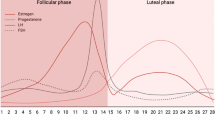Abstract
The aim of this study was to evaluate the effect of postpartum pelvic floor muscle exercise in the prevention and treatment of urinary incontinence. A prospective comparison design of 99 matched pairs (n=198) of mothers, a training group and a control group, was used. Eight weeks postpartum the training group attended an 8-week intensive pelvic floor muscle exercise course, training in groups led by a physical therapist for 45 minutes once a week. In addition they were asked to exercise at home at least three times per week. The control group followed the ordinary written postpartum instructions from the hospital. Pelvic floor muscle strength was measured pretreatment at the eighth, and post-treatment at the 16th week after delivery, using a vaginal balloon catheter connected to a pressure transducer. Vaginal palpation and observation of inward movement of the balloon catheter during contraction were used to test the ability to perform correct the pelvic floor muscle contraction. Urinary leakage was registered by interview, specially designed instruments to measure how women perceive SUI, and a standardized pad test. At baseline (8 weeks postpartum) there was no significant difference in the number of women with urinary incontinence in the training group compared to the control group. At 16 weeks postpartum, after the 8-week treatment period, there was a significant (P<0.01) difference in favor of the training group. In addition, a significantly greater improvement in pelvic floor muscle strength between test 1 and test 2 was found in the training group compared to the control group. The results show that a specially designed postpartum pelvic floor muscle exercise course is effective in increasing pelvic floor muscle strength and reducing urinary incontinence in the immediate postpartum period.
Similar content being viewed by others
References
Allen RE, Hosker GL, Smith ARB, Warell DW. Pelvic floor damage and childbirth: a neurophysiological study.Br J Obstet Gynaecol 1990;97:770–779
Snooks SJ, Setchell M, Swash M, Henry MM. Injury to innervation of pelvic floor sphincter musculature in childbirth.Lancet 1984;8:546–550
Snooks SJ, Swash M, Mathers SE, Henry MM. Effect of vaginal delivery on the pelvic floor: a five year follow-up.Br J Surg 1990;77:1358–13560
Bø K, Mæhlum S, Oseid S, Larsen S. Prevalence of stress urinary incontinence among physically active and sedentary female students.Scand J Sports Sci 1989;11:113–116
Nygaard I, DeLancey JOL, Arnsdorf L, Murphy E. Exercise and incontinence.Obstet Gynecol 1990;75:848–851
Sommer P, Bauer T, Nielsen KK et al. Voiding patterns and prevalence in women.Br J Urol 1990;66:12–15
Thomas TM, Plymat KT, Blannin J, Meade TW. Prevalence of urinary incontinence.Br Med J 1980;281:1243–1245
Kegel AH. Progressive resistance exercise in the functional restoration of the perineal muscles.Am J Obstet Gynecol 1948;56:238–249
Polden M, Mantle J. Physiotherapy in obstetrics and gynaecology. Oxford: Butterworth Heinemann, 1992
Sleep J, Grant A. Pelvic floor exercises in postnatal care.Midwifery 1987;3:158–164
Dumolin C, Seaborne DE, Quirion-DeGiradi C, Sullivan SJ. Pelvic floor rehabilitation. Pt. 2.Phys Ther 1995;75:1075–1081
Bø K, Hagen RH, Kvarstein B, Larsen S. Pelvic floor muscle exercise for the treatment of female stress urinary incontinence. II. Validity of vaginal pressure measurements of pelvic floor muscle strength. The necessity of supplementary methods for control of correct contraction.Neurourol Urodyn 1990;9:479–487
Bø K. Pelvic floor muscle exercise for the treatment of stress urinary incontinence: an exercise physiology perspective.Int Urogynecol J 1995;6:282–291
DiNubile NA. Strength training.Clin Sports Med 1991;10:33–62
Bø K, Hagen RH, Kvarstein B, Jørgensen J, Larsen S. Pelvic floor muscle exercise for the treatment of female stress urinary incontinence. III. Effects of two different degrees of pelvic floor muscle exercises.Neurourol Urodyn 1990;9:489–502
Hanzal E, Berger E, Koelbl H. Levator ani muscle morphology and recurrent genuine stress incontinence.Obstet Gynecol 1993;81:426–429
Koelbl H, Bernascheck G, Wolf G. A comparative study of perineal ultrasound scanning and urethrocystography in patients with genuine stress incontinence.Arch Gynecol Obstet 1988;244:39–45
Constantinou CE, Govan DE. Contribution and timing of transmitted and generated pressure components in the female urethra. In: Female Incontinence. New York: Allan R. Liss, 1981:113–120
DeLancey JOL. Anatomy and mechanics of structures around the vesical neck: how vesical neck position might affect its closure.Neurourol Urodyn 1988;7:161–162
Bø K. Reproducibility of instruments designed to measure objective evaluation of female stress urinary incontinence.Scand J Urol Nephrol 1994;28:27–100
Sayer TR, Dixon JS, Hosker GL, Warell DW. A study of periurethral connective tissue in women with stress incontinence of urine.Neurourol Urodyn 1990;9:319–320
Landon CR, Crofts CE, Smith ARB, Trowbridge EA. Mechanical properties of facia during pregnancy: a possible factor in the development of stress incontinence of urine.Contempt Rev Obstet Gynaecol 1990;2:40–46
Ulmsten U, Ekman G, Giertz G, Malmstrøm A. Different biochemical composition of connective tissue in continent and stress incontinent women.Acta Obstet Gynecol Scand 1987;66:455–457
Wilson PD, Sammarai TAL, Deakin M, Kolbe E, Brown ADG. An objective assessment of physiotherapy for female genuine stress incontinence.Br J Obstet Gynaecol 1987;94:575–582
Krajl B. Comparative study of pad tests — reliability and repetiveness.Neurourol Urodyn 1989;8:305–306
Lose G, Rosenkilde P, Gammelgaard J, Schroeder T. Pad weighing test performed with standardized bladder volume.Urology 1988;32:78–80
Blavias JG, Rodney AA, Appell RA, et al. Standards of efficacy for evaluation of treatment outcomes in urinary incontinence: recommendations of the Urodynamic Society.Neurourol Urodyn 1997;16:145–147
Author information
Authors and Affiliations
Additional information
EDITORIAL COMMENT: This paper is one of only a few looking at the efficacy of a rigorous pelvic floor muscle exercise training regime to help women with incontinence in the postpartum period. Whether or not these results will translate long-term into a lower incidence of urinary incontinence as these women age, is unknown, and may never be known. However, this paper points out that there is a definite benefit from pelvic floor muscle exercise for the treatment of postpartum incontinence, and we can use this information to more strongly counsel our patients in the use of these exercises.
Rights and permissions
About this article
Cite this article
Mørkved, S., Bø, K. The effect of postpartum pelvic floor muscle exercise in the prevention and treatment of urinary incontinence. Int Urogynecol J 8, 217–222 (1997). https://doi.org/10.1007/BF02765817
Issue Date:
DOI: https://doi.org/10.1007/BF02765817




